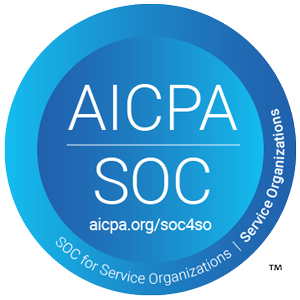This is the 1st in a series of blogs where, Gretchen Hoffman, VP of Marketing at Brightidea, interviews Innovation Program leaders to understand their challenges and how they solve them, their thoughts on design thinking and hear their success stories. This series also captures years of innovation program expertise to help enterprises enhance – or create – a culture of innovation.
An innovation program needs to be designed in-accordance with a company’s specific strategy and goals in mind in order to be a success. Defining an innovation program is useless without the right people driving it, regardless of how well the platform is designed. This is something Ann Marie Dumais understands better than most.
Dumais was at Nielsen where she led the development, integration and deployment of the New Product Introductions (NPI) process. NPI is a global, Nielsen-wide, end-to-end (ideation through post-launch). Tollgate product development process, integrated with all key functional areas and activities. Dumais led the creation and establishment of a worldwide innovation platform, powered by Brightidea, that feeds the NPI framework, as well as other key strategic Nielsen initiatives. She is now a Brightidea advocate and strategic client advisor.
Check out her insights from her role as an Innovation Program leader at Nielsen. Gretchen (GH) and Ann Marie (AMD) hold an informative conversation which is captured below:
GH: Let’s jump right in and talk about pain points. What is the biggest challenge organizations face when it comes to systematizing innovation?
AMD: The biggest challenge is employee engagement, but it doesn’t have to be – it’s all about education.
GH: Let’s explore that – how should businesses be educating employees around innovation?
AMD: Innovation has to be an everyday discipline – it doesn’t grow on trees (nor in think tanks), so step one is really creating a culture of innovation whereby innovation is literally embedded in the DNA of a company. And THAT largely falls to the innovation program team, as it’s their (initial) primary task when launching an innovation program.
GH: So innovation program team structure is pretty important then?
AMD: Team structure and make-up is very important. Optimally, an innovation team should be led by someone with a dynamic, varied background. This person needs to be able to market and sell the innovation program internally, they need to be very self-directed, good listening skills and okay with pushing the company to explore and take calculated risks. Other important roles on your innovation team include:
- Doers to execute and get stuff done, get programs going
- Challengers to kick tires and pick ideas apart
- Helpers to take care of social interactions, bring different people together and smooth relationships
- Creators to offer imaginative, no holds barred ideas (that haven’t necessarily been thought through)
- Combine all of those folks together and you have a team built for success!
GH: Looping back to your thoughts around employee education – can’t we just introduce a well thought out innovation program and get everyone onboarded?
AMD: We can’t actually. I remember we made the fatal error of assuming everyone knew what we meant when we said “innovation” when we launched our innovation program – but they didn’t. Global, regional and even local differences drive varied perspectives on the meaning of this word, so step one was to ensure we defined what Innovation meant to Nielsen and then ensure that definition was shared broadly and frequently. Second, we needed to reinforce, provide the employees the confidence, that everyone is an innovator, regardless of their company role.
It’s not enough for CEOs to send messages out about the new innovation program (though having that support is crucial). A successful innovation program launch requires a multi-tiered marketing strategy. The word “innovation” can be intimidating – so it’s important to ease users into it. Define what innovation IS and provide examples. And start conversations around what it means to be innovative and how they can become innovative.
And starting out with light-hearted, low-risk engaging polling activities to introduce them to the platform itself helps as well. Create a seamless experience and ask daily questions like “If you could live anywhere, where would that be?”.” Then when you start to ask about business concerns, they’ll be more comfortable responding and participating.
GH: Can you provide some tips beyond education for increasing employee adoption rate?
AMD: Creating a seamless user experience is critical. Your innovation program should look and feel like it’s part of their day-to-day desktop, offering the very best and intuitive experience, down to the smallest detail like the colors and button styles. The user shouldn’t realize they’ve entered a separate platform because that can be enough to make them click away. And fortunately, Brightidea seamlessly integrates with other software tools via APIs. I would also highly recommend creating fun vignettes that reinforce what role the company believes Innovation plays, and how specifically they expect employees to be innovative.
GH: Why would employees click away?
AMD: So you’ve successfully completed the gargantuan task of educating and everyone is in the “innovator mindset” and ready to go – Your next biggest hurdle is to ensure that when they enter the innovation portal for that first challenge, it is simple, straight-forward and self-directed. The Brightidea software is extremely powerful and enables you to customize greatly – the caveat is you need to monitor the complexity of content/site layout you are putting forth. If the site layout requires training – it will not drive scalable employee engagement. The site needs to be intuitive and easily navigable.
GH: How can an innovation team ensure a consistent experience across business functions?
AMD: When working across business functions, it’s important to enable the various groups flexibility but not at the expense of consistency. Each group should be empowered to and encouraged to – run their own innovation challenges, and the role of the innovation team is to govern to ensure the user experience is consistent and that naming conventions are consistent to ensure data accuracy and later metric reporting.
GH: So the innovation team doesn’t own the process?
AMD: The innovation team oversees the process, but the process itself is owned by all the key functional stakeholders. The best thing an innovation team can do is partner with project managers in each business function tasked with moving their goals forward; whether their goals be around ideas for new product, productivity or even employee engagement Setting these functions up to be successful – and helping them establish a cadence for gathering and executing ideas – is really the overarching innovation team role. The innovation team are the facilitators of the process and govern the overarching function, but they can’t micromanage it.
GH: What is the biggest challenge once the innovation program is in place and starts to pick up steam?
AMD: The biggest challenge is creating – and having everyone stick to – process flows. An innovation program can become overwhelmed with ideas if there aren’t well-thought out evaluation criteria, but even more potentially damaging are “back door deals.” If there are other ways for a new productidea to obtain funding/or get approved outside of the innovation program process flow, the whole program can fall apart. Everyone in the company MUST commit to the process and understand compliance drives visibility, which in turn drives innovation transparency.
GH: Any final thoughts for innovation program teams to put them on the right path?
AMD: Yes, mapping out how you’ll evaluate and triage ideas that come in is essential. Think this through thoroughly before launching a challenge or risk being overwhelmed with thousands of ideas that go nowhere.
Please share your ideas for delivering successful innovation programs in the comments. And check out our new paper Start a Collaborative Innovation Program.


